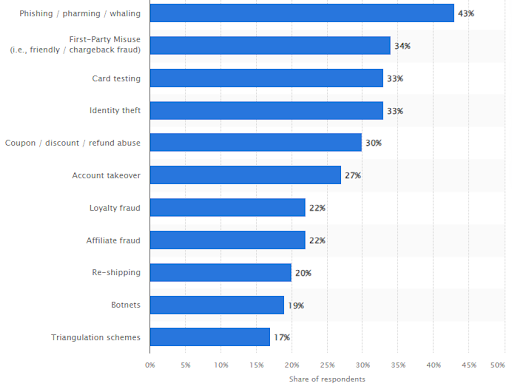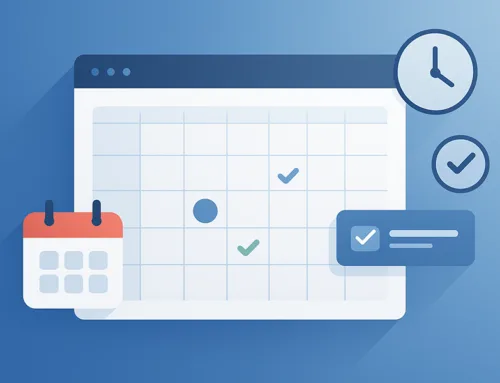Magento is a leading eCommerce platform, powering thousands of online stores worldwide. Together with WooCommerce and Shopify, it is amongst the top 3 most widely used and preferred platform for eCommerce. However, like any other platform, it is not without security risks. Cybercriminals frequently target online stores in the hopes of getting their hands on the customers’ payment information.
Of course, hackers are not the only one merchants need to worry about. Certain customers also engage in fraud, especially coupon and reshipping fraud. This had led to an increase in popularity of Magento 2 restrict products by customer group extensions. Therefore, merchants need to be on their toes in tackling this menace. The figure below shows the most common frauds faced by merchants.

The value of losses due to payment frauds is continuously increasing as shown below, thereby requiring urgent action.

Therefore, it is quite evident that merchants and even users should not rely on Magento alone for their store’s security. Instead, they must take a proactive approach, including setting up two factor authentication, tweaking the settings through admin panel, and using third party extensions.
Common Magento Security Problems
Server Attacks
The most common security issue that you will encounter in Magento is server attacks, commonly referred to as Distributed Denial-of-Service (DDoS) Attack. The simplest way to describe this attack is that there is too much unwanted traffic (usually bots) on your website, preventing your genuine customers from accessing it. Naturally, if your customers are unable to access your website, you are losing revenue.
Website Hacking
From time to time, we hear cybercriminals hacking websites and uploading obscene images or messages. Magento websites are no exception to this trend either. By exploiting vulnerabilities in your code or third-party extensions, hackers can gain access to the website, allowing them to deface your website.
When your users come across this, they will be reluctant to enter their personal and financial information. Over time, you will lose your market share. Of course, website defacement is only one of the possibilities. Hackers may delete crucial information or take over the website entirely.
Cross-site Scripting
This where a hacker injects malicious code into the website, allowing them to gain access to sensitive information and even perform tasks such as sending spam emails using your store’s email address.
Brute Force Attacks
This involves hackers guessing the username and password simply through trial and error. The hacker uses a bot to enter usernames and passwords in the hopes of finding the right one.
Protecting Your Magento 2 Store – Best Practices
Choose the Right Hosting
The first recommendation we give to every Magento 2 store owner is to select a reliable and secure hosting provider. We are not going to name any specific service provider, since there are so many available globally. All you need to do is ask different providers about their security practices and compare them with one another
This will give you an idea about which hosting provider is reliable. Remember, a top hosting provider will offer data backups, easy rebuilds, regular malware detection, and access controls. If money is a concern, you can always ask the hosting provider for a discount or buy the hosting when it has promotions on offer.
Install Latest Updates
We don’t recommend installing beta updates unless you really know what you are doing. However, as soon as Magento releases the final update, don’t hesitate to install it. These updates are released for a reason. More often than not, they are used to fix a vulnerability that was not caught earlier. Secondly, the updates come with new features, including security related. If you are still on Magento 1, migrate to Magento 2 right away as Magento 1 is no longer supported.
Adopt Password Best Practices
Many Magento admin and user accounts are compromised simply because they do not follow well-established best practices. It is pertinent to mention that a good password is a combination of uppercase, lowercase, numbers, and special characters. Secondly, do not use the same password for other websites.
Always have a separate password for each website. Use encrypted digital wallets to store username and passwords securely. Lastly, update your passwords periodically. There are various extensions that force users to change their passwords after a specified period.
Magento offers robust in-built password features. These include the ability to set the minimum password character length and maximum number of allowable attempts before the account is locked. For more information on these features, refer to our article on ‘How to Configure Password Options in Magento 2’.
Restrict Product Access
Earlier we talked about customers defrauding customers and how this has led to an increase in the use of Magento 2 restrict products by customer group extensions. You can also restrict products and categories based on other variables, including regions. Therefore, if your store is at risk of such security issues, set up the necessary restrictions.
Don’t Use the Default Admin Panel Path
Another common mistake that most admin users make is that they keep using the default admin panel path. Everyone knows the default URL, making it easier for hackers to exploit. Therefore, the first thing you must do is change the default admin panel URL. There are three methods to change the admin panel URL. Choose whichever you find convenient.
Use Magento Security Extensions
Merchants should not underestimate the usefulness of Magento 2 security extensions. Sure, they are not free, but they are a must-have if you wish to enhance your store’s security. These extensions offer a wide range of features, including the ability to restrict IP addresses, block certain regions, strengthen login process, set up two factor authentication, and remove malware.
Set Up Two Factor Authentication (2FA)
This goes without saying but a lot of security breaches can simply be avoided if you have set up 2FA. Even if someone manages to guess the password, they cannot login to your account unless they enter the code sent to you via email or SMS. Here’s a detailed guide on how to set up 2FA in Magento 2.
If you doubt the importance of 2FA in securing your account, look at the below statistic.
The above statistic is based on a survey on developers worldwide. They state that increasing 2FA adoption must be the leading priority from a security perspective. So, set up 2FA right now if you haven’t already.
Magento Security Scan
Running a Magento security scan can be quite helpful in detecting and removing malware among numerous other things. The scan provides a comprehensive report, including suggestions on how to resolve issues. What makes this scan quite beneficial is that it runs over 21,000 security tests to help identify potential malware. We recommend running the scan daily for enhanced security. Alternatively, you can use a third party Magento security provider, like Site Lock.
Conclusion
While Magento is itself a secure platform, relying on it alone is a recipe for disaster. As the store owner, it is imperative that you take more robust measures for enhanced security. This goes a long way in protecting your store against internal and external threats. If you have any questions related to your store’s security or anything Magento-related, don’t hesitate to contact us. Our Magento experts will identify and fix the problem to your satisfaction.





